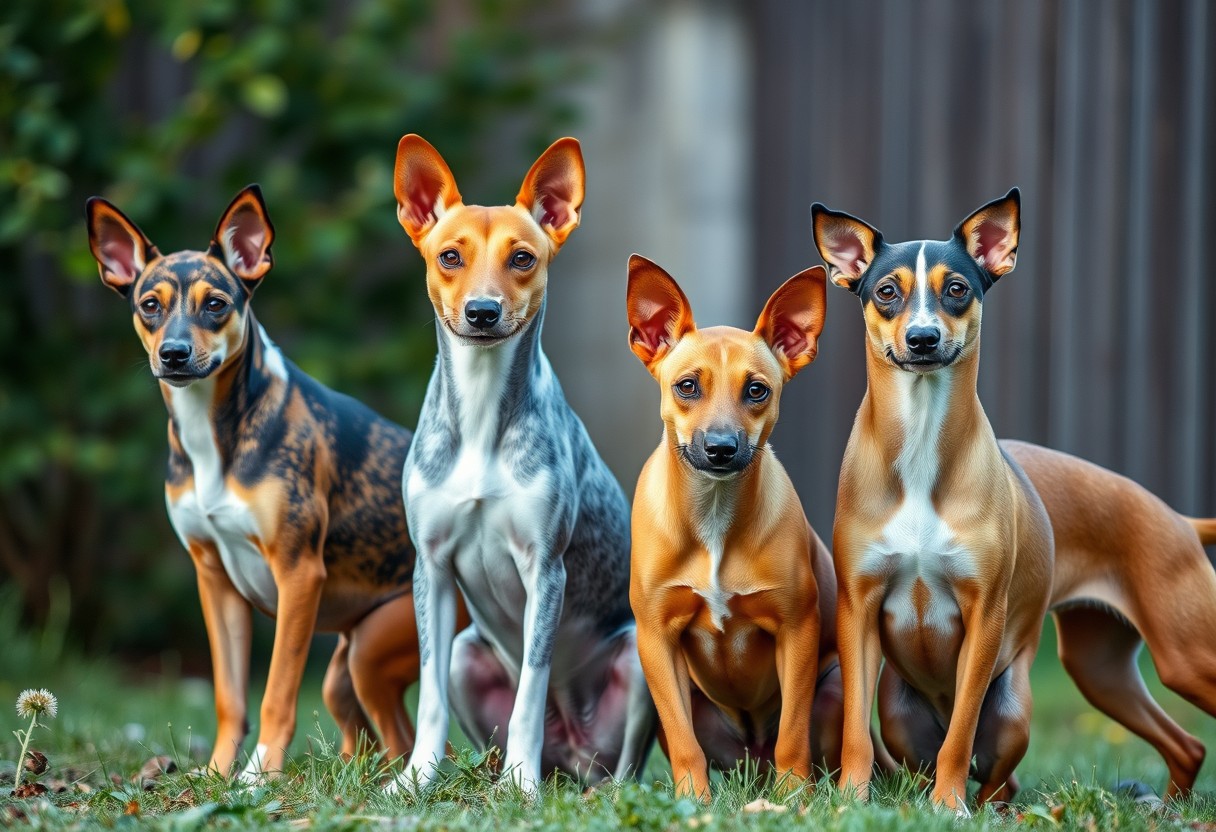Rare Basenji Colors – Stunning and Unique Coat Variations

You might be surprised to learn that Basenjis come in a range of rare colors that are not only stunning but also highlight their unique characteristics. While the typical Basenji coat colors may be familiar, exploring these rare variations can enhance your appreciation for this remarkable breed. In this post, you’ll discover some of the most captivating coat colors, their significance, and what makes them stand out. Get ready to take a closer look at the beautiful and distinctive hues that make Basenjis truly special!
Key Takeaways:
- Rare Colors: Basenjis can display unique coat colors such as brindle, liver, and blue, which are less frequently seen compared to the common red and white.
- Genetic Factors: The appearance of these rare colors is influenced by specific genetic combinations and mutations, making them even more special.
- Attraction and Ownership: The allure of owning a Basenji with a stunning rare coat can attract enthusiasts and collectors, contributing to the breed’s appeal.

The Basenji Breed: An Overview
The Basenji is a unique dog breed known for its elegant appearance and captivating personality. Originally hailing from Central Africa, these dogs were cherished for their hunting skills and became known as the “barkless dog” due to their distinctive vocalizations. With a strong hunting instinct and spirited energy, Basenjis captivate dog lovers around the world, making them both fascinating companions and challenging pets.
History and Origin
Beside their stunning appearance, the Basenji breed has a rich historical background that dates back thousands of years in Central Africa. Initially bred by the Pygmy people, these dogs served as hunting companions, aiding in tracking small game. Their role in ancient societies underscores the breed’s resilience and adaptability. (The historical significance of the Basenji truly highlights their remarkable journey and enduring legacy.)
Characteristics of the Basenji
Beside their unique history, Basenjis are characterized by their refined physical traits and spirited demeanor. You will notice their sleek, muscular build, erect ears, and tightly curled tails. Energetic yet independent, they possess a playful personality, often exhibiting stubbornness and cleverness. These traits make them both charming and sometimes challenging to train. (Understanding the Basenji’s characteristics will help you build a strong bond with your dog.)
In fact, the Basenji’s individual quirks set them apart from other breeds. With intelligence and curiosity, you might find them engaging in playful mischief or finding clever ways to escape. Their affectionate nature makes them loyal companions, yet their independence can lead to challenges during training. Owning a Basenji means embracing both their charming antics and the need for consistent direction to keep them happy and engaged. (Recognizing these unique attributes is necessary for a successful relationship with your Basenji.)
Understanding Coat Colors
One of the most fascinating aspects of Basenjis is their diverse range of coat colors. Understanding these colors involves not just visual appeal but also genetics. The variations in coat colors reflect both the breed’s heritage and specific genetic traits, leading to stunning and unique appearances that set individual dogs apart.
Genetics of Coat Colors
With each coat color stemming from different genetic factors, Basenjis showcase the influence of several key genes. The primary genes responsible for their coloration include the Agouti gene, which determines the pattern and intensity of color, and the Extension gene, which affects whether a dog can express black pigmentation or a dilute version. These combinations can result in a variety of stunning colorations seen in the breed.
Common vs. Rare Colors
Rare Basenji colors include unique shades like brindle and white, while common colors consist of red, fawn, and black. The common coat colors typically present as solid or with white markings, while rare variations showcase a mix of hues and patterns, such as tri-colored with more distinct contrasts. Understanding these distinctions helps you appreciate the unique beauty of each dog. (Choosing a rare color may require extra care in breeding practices.)
Rare variations in Basenji coat colors can captivate dog enthusiasts and potential owners alike. In addition to brindle and unusual patterns, you may also encounter lesser-known shades like liver or blue, which are incredibly distinct from the typical colors of this breed. Being aware of these rare colors can help you make a well-informed decision when selecting your future pet. (Investing in a dog with a rare color often comes with higher financial considerations.)
A keen understanding of Basenji coat colors not only enhances your appreciation for these dogs but also guides you in the responsible selection and care of your furry companion. By recognizing both common and rare colors, plus the underlying genetic principles, you’ll be better equipped to choose a Basenji that captures your heart while aiding in its care and well-being.
Rare Color Variations in Basenjis
Unlike the more common colors seen in Basenjis, such as red and white or black and white, the rare color variations are what make this breed truly special. You may come across stunning shades like blue, which presents a silvery-gray appearance, or brindle, characterized by a unique mix of dark and light stripes. These exceptional coat colors not only captivate dog enthusiasts but also add to the overall allure of the Basenji breed.
Unique Shades and Patterns
Across the spectrum of rare Basenji colors, you will find unique patterns and shades that are truly eye-catching. In addition to blue and brindle, some Basenjis may showcase a striking combination of colors that creates a mesmerizing mosaic effect. The irregular patterns can captivate potential owners and display the individual charm of each Basenji, making them stand out in any setting.
The Rarity Factor
By examining the breeding practices behind Basenjis, it becomes clear why certain colors are regarded as rare. These unique variations often arise from specific genetic traits that are less frequently passed down through generations. This limited genetic diversity can lead to challenges in maintaining the integrity of the breed while pursuing visually captivating colors, making them sought after by enthusiasts.
Even with the allure of rare color variations, it is important to be aware of breed standards and the potential health implications tied to extensive inbreeding. Choosing a reputable breeder who prioritizes health and temperament over color is paramount to ensuring that the Basenji you bring into your home is not only beautiful but also has a sound disposition. Understanding the rarity factor can empower you to make informed decisions while searching for your perfect companion.

Caring for a Basenji with Rare Colors
Not all Basenjis are the same, especially when it comes to their stunning rare colors. Caring for your Basenji means being aware that certain coat variations might come with unique care needs. This includes providing proper skincare, as some rare colors may be more prone to sunburn or skin sensitivities. (Being proactive about regular vet check-ups can help manage these risks.)
Health Considerations
For Basenjis with rare coat colors, skin sensitivities can be more common. These dogs might require special attention to their dermatological health, including using high-quality, hypoallergenic grooming products. Watch out for any signs of irritation or discomfort, as early intervention can prevent more serious issues. (It’s necessary to choose a vet experienced with breed-specific health concerns.)
Grooming and Maintenance
Beside health care, the grooming routine is vital for maintaining your Basenji’s rare coat. Regular brushing helps to keep their fur looking vibrant and removes loose hair, while frequent baths with gentle, color-preserving shampoos will enhance their stunning appearance. Pay attention to specific grooming needs based on your dog’s color variation, as some may require more frequent grooming. (Investing in the right grooming tools can make a significant difference.)
Considering your Basenji’s unique coat, establishing a regular grooming schedule will help you keep their coat healthy and beautiful. Focus on the specific needs related to their rare colors; some may have delicate hair or skin that need gentle care. Additionally, always check for any signs of matting or tangling, especially in areas like the ears and tail. (A well-groomed Basenji showcases their color and overall health, reflecting the care you provide.)

The Appeal of Rare Basenji Colors
Now, the allure of rare Basenji colors lies in their striking appearance and individuality, making them a standout among dog enthusiasts. These unique hues not only attract attention but also evoke admiration for their breathtaking beauty. Owners take pride in showcasing their rare-coated companions, enhancing the breed’s image and allure within the canine community.
Breeders and Collectors
By focusing on rare Basenji colors, breeders and collectors have carved a niche within the dog breeding industry, leading to a surge in interest for these unique hues. This growing fascination drives breeding trends that prioritize distinctive colors, often stirring debates about ethics and health in the breeding process. (Make informed choices when selecting breeds to ensure genetic diversity.)
Show and Competitions
The influence of rare Basenji colors in dog shows and competitions cannot be understated, as they can sway judges’ decisions in favor of uniqueness. While breed standards generally prioritize specific traits, rare colors often become a coveted attribute that can elevate an entry’s chances in the ring. (Understand how presentation and coat color can impact your competitive strategy.)
Breeders and dog owners alike must be aware that while rare colors can be visually appealing, the integrity of the breed should remain the primary focus. Dog shows often evaluate dogs based on established breed standards, which include traits beyond color. Striving for a balance between aesthetics and health is crucial, as rare colors can sometimes be linked to genetic issues. (Commit to responsible breeding practices that prioritize breed integrity over appearance.)
Conclusion
Now that you understand the stunning and unique coat variations in rare Basenji colors, you can appreciate the diversity and beauty they bring to this breed. Whether you’re considering adding a Basenji to your family or simply admire them from afar, knowing about their coat and color options enriches your experience. Explore more about their Coat and Color to deepen your insight into these fascinating dogs.
Q: What are some of the rarest colors found in Basenjis?
A: Basenjis primarily come in four standard colors: red, brindle, black, and white. However, there are some unique and rare color variations that can occur, including blue, fawn, and even chocolate. These colors are not recognized as standard by major breed organizations, making them particularly sought after among enthusiasts. The genetics behind these variations can be quite complex, often involving recessive genes that can result in these stunning coat colors.
Q: How do rare Basenji colors affect their breed standard?
A: The standard breed colors for Basenjis are clearly outlined by organizations such as the American Kennel Club (AKC) and the Fédération Cynologique Internationale (FCI). While rare colors can be visually striking and appealing, they may not meet the criteria in conformation shows due to deviations from the established breed standards. Such variations may impact a dog’s eligibility for competition, but they still hold significant value as beloved companions and unique representatives of the breed.
Q: Are rare-colored Basenjis more expensive than traditional colors?
A: Yes, rare-colored Basenjis often come with a higher price tag compared to their traditional counterparts. This price increase can be attributed to their uniqueness and the demand from breeders and owners who seek these striking coat colors. However, prospective owners should approach breeding practices with caution, ensuring that the focus remains on the health and well-being of the dogs, rather than solely on their aesthetic appeal.





